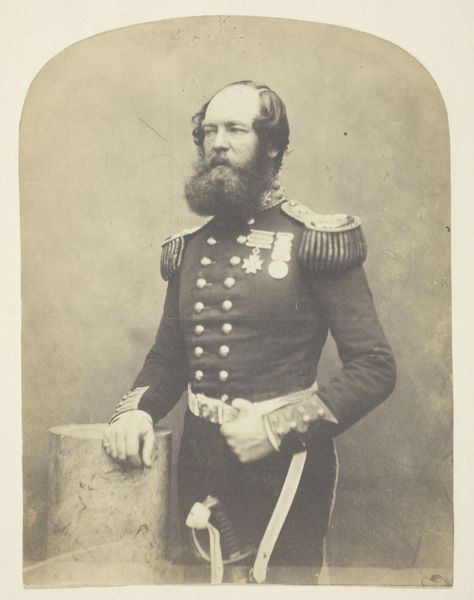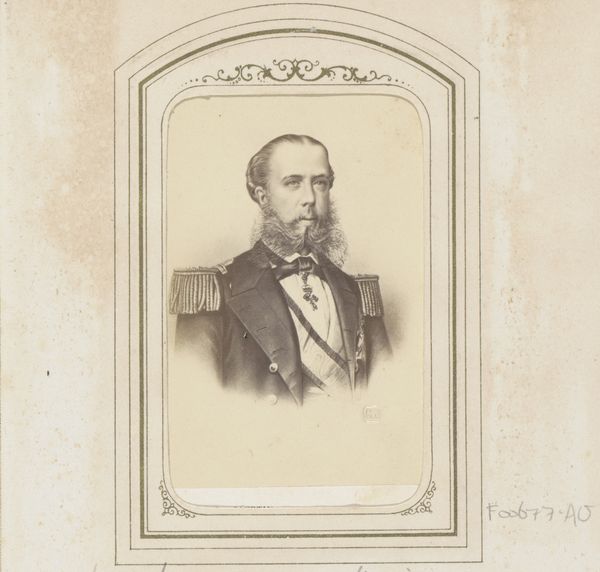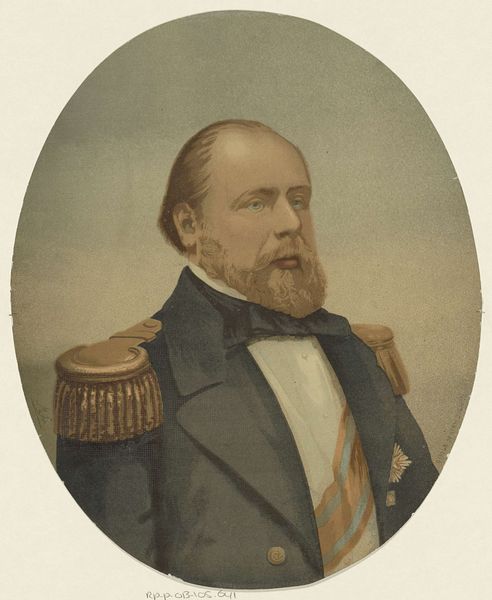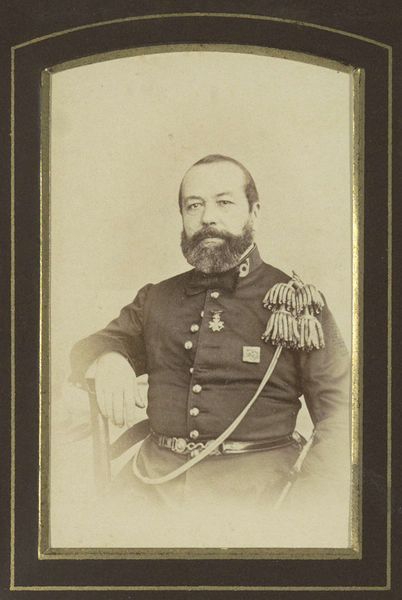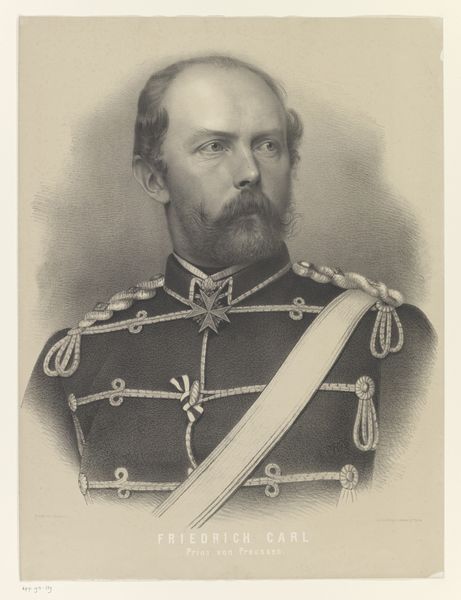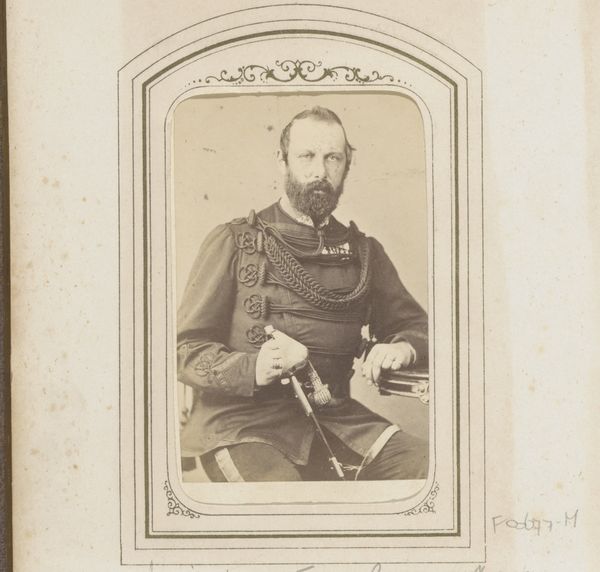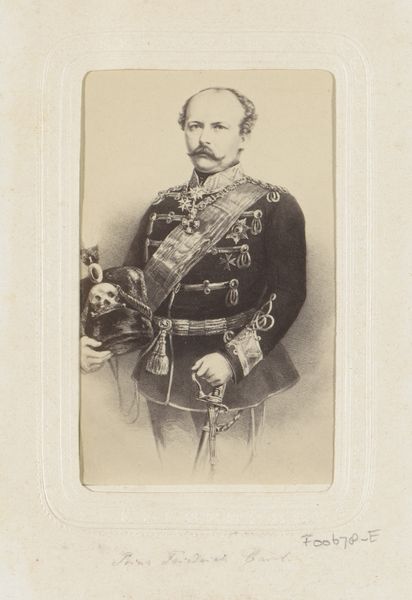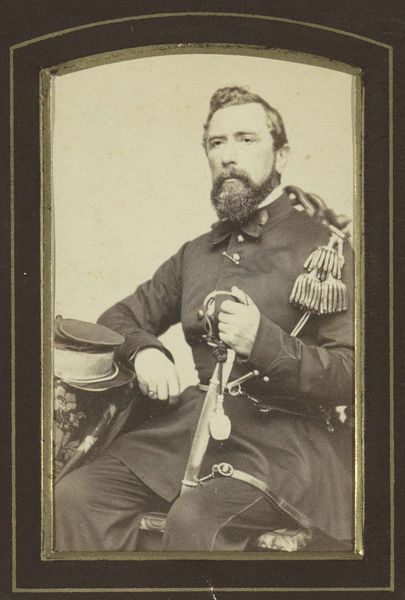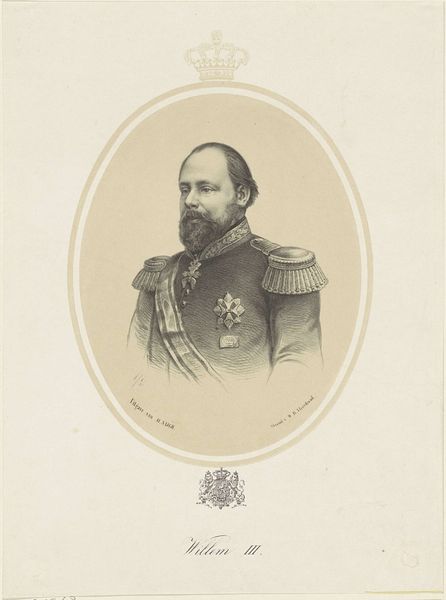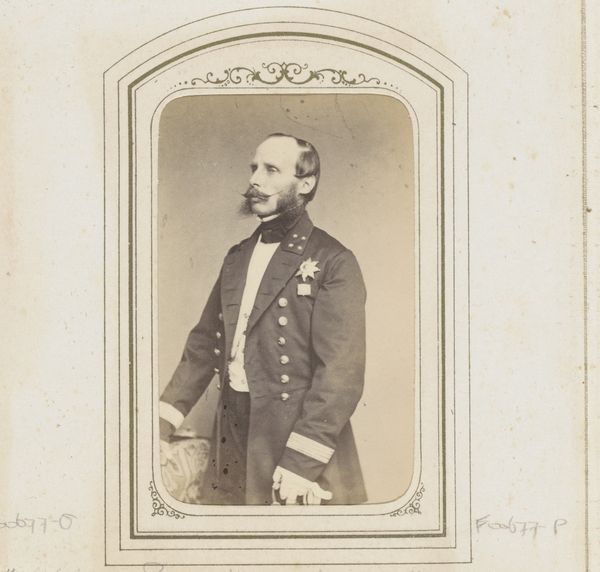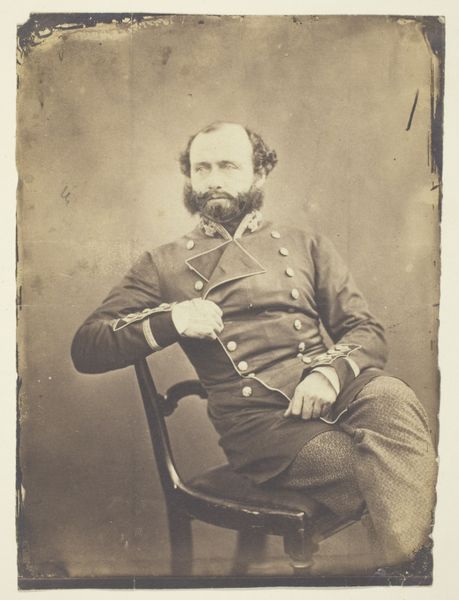
daguerreotype, photography
#
portrait
#
daguerreotype
#
photography
#
historical photography
Dimensions: height 64 mm, width 52 mm, height 105 mm, width 61 mm
Copyright: Rijks Museum: Open Domain
Curator: This daguerreotype, a photographic portrait of Willem III, King of the Netherlands, made its debut in 1863. It resides here, at the Rijksmuseum. What leaps out at you? Editor: Somber. I get a very serious vibe from it. The oval format makes him look as though he's peering out from the past, but not in a friendly way, you know? Regal, perhaps, but not inviting. Curator: You nailed it, actually. These types of photos were carefully curated for exactly those signals of authority and legacy. Willem III ascended to the throne in 1849, and ruled during a time of profound social and political change. Editor: The clothing does a lot of work, here. The uniform is a deliberate statement, with those elaborate epaulettes and the prominent display of medals. How interesting that those symbols have morphed, changed over the years. What reads powerful then would have a different meaning in our current context. Curator: And note the formal rigidity – very much a statement about maintaining tradition, about order and the monarchy's enduring strength. There's something very specific being communicated through posture, expression, all of it meticulously posed. Editor: It’s fascinating to think about how power constructs its image. When we view him, as contemporary eyes, knowing the messy political landscape he occupied – colonialism, inequality – we inevitably question the performance of dignity he is giving us. The weight of empire, you know? Curator: Absolutely, and this highlights how photographic portraiture serves not merely as a reflection of reality but as an active agent in shaping it. How the subject wanted to be viewed. It’s not just documentation; it's active construction. I almost wonder how *he* would react knowing people dissect this representation centuries later! Editor: That’s precisely why diving into these artifacts, re-examining their narratives and subtexts through our modern, diverse lenses is such rewarding work. The contrast sharpens our insights and it shows how perspectives always keep evolving. Curator: I agree; engaging with these historical fragments, like a window to another era, not only lets us reinterpret the past but reframes how we navigate the present.
Comments
No comments
Be the first to comment and join the conversation on the ultimate creative platform.
